Backyard Maple Sugaring
Make maple syrup right in your own backyard.
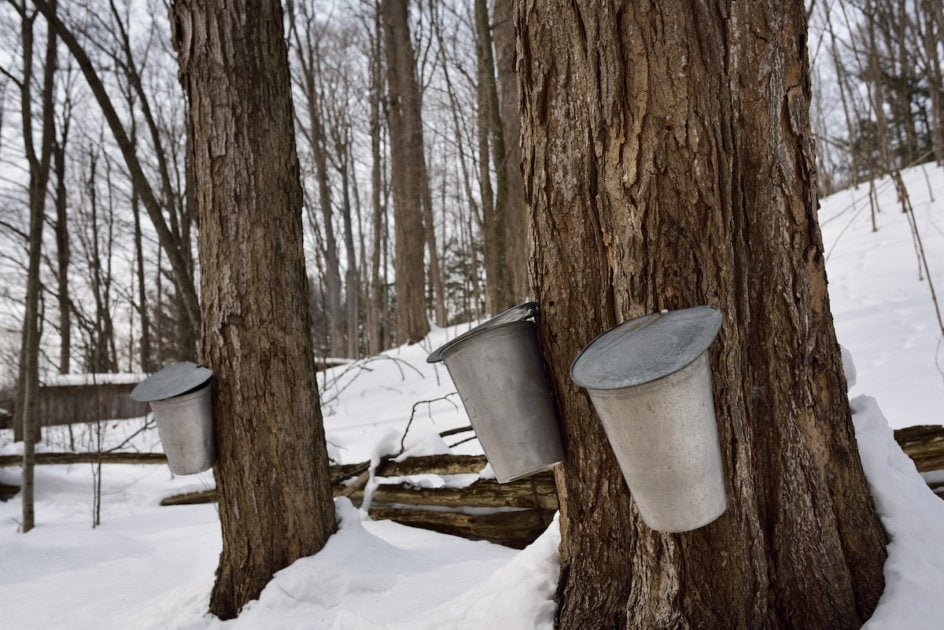
Native Americans, especially the Eastern Woodland tribes, are usually given credit for discovering that a sweet syrup can be produced from the sap of the maple tree. Their legends about how this process got started vary a bit from tribe to tribe, but usually follow one of two scenarios. In scenario one a woman inadvertently cooks some meat in the sap and discovers its sugary qualities. Scenario two is a bit more colorful. Here, the whole tribe has come under the influence of the amber liquid that flows from the trees in an already concentrated state. Men, women, and children alike lie around under the trees and do nothing but drink syrup from the branches. The Great Spirit calls on a sort of tribal superhero, sometimes called Glooscap, who dilutes the syrup into sap again. Now the tribe is able to return to the productivity they enjoyed before becoming corrupted by the sugary tonic. I guess I have to go with the first explanation, though the second is charming enough and has a moral about getting something for nothing.
I first became interested in making my own syrup by observing my neighbor, sitting in an early March sun, patiently boiling sap over a poplar fire. He’s passed on now and, though I watched him at his craft, I failed to ask him about it. So I’ve done the research myself, and found that you can make syrup pretty inexpensively. It isn’t necessary for someone who wants to make a few gallons for family and friends to spend hundreds of dollars on evaporators or vacuum pumps. With only twenty or so maples in my yard; I want to keep it simple. And, I want to avoid the harsh detergents sometimes used when harvesting with plastic tubing. I’m going with a variation on what is known as kettle syrup.
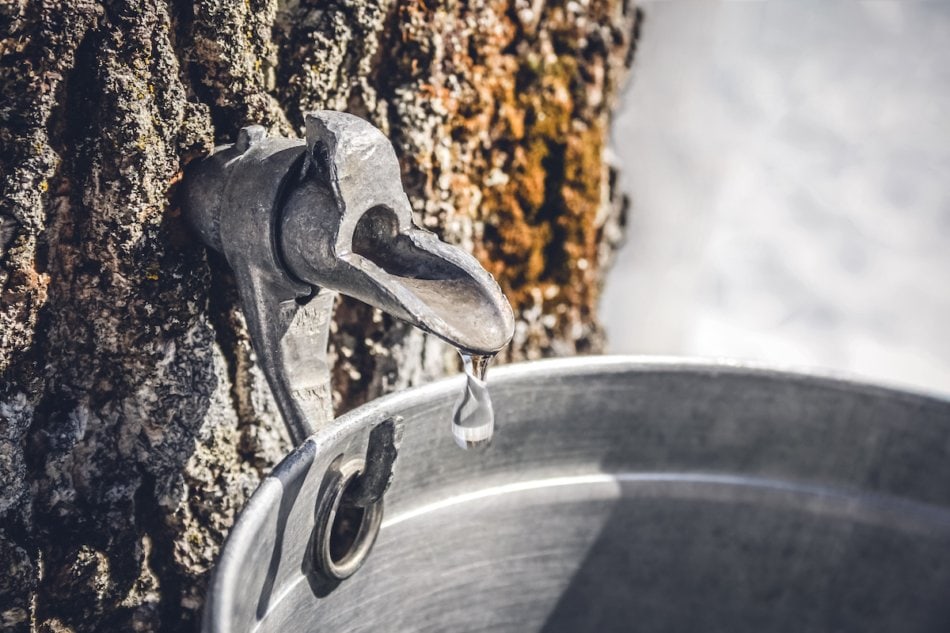
What you will need are trees, and cool nights (below freezing) followed by warm days (above 40° F). Any species of maple (genus Acer) will work, though the sugar maple is the preferred variety and has the sweetest sap. A tree twelve inches in diameter can be tapped without permanent damage; and really large trees can support more than one tap. You can expect six to ten gallons of sap per tap and you will probably need 40-50 gallons of sap to make one gallon of finished syrup.
Taps are usually drilled 2 1/2″-3″ deep with a 7/16″ bit at a slight upward angle. These dimensions accommodate commercially available spiles or spouts; but you could also fashion your own from elderberry branches, which are easy to hollow out. The first maple sap gatherers purportedly gathered the liquid in pails made of birch bark. Lacking the skill to produce a waterproof pail naturally, I’ll recycle plastic milk or juice jugs with a hole fashioned in the side for the spout. Buckets designed for sap gathering are great, but rather pricey.
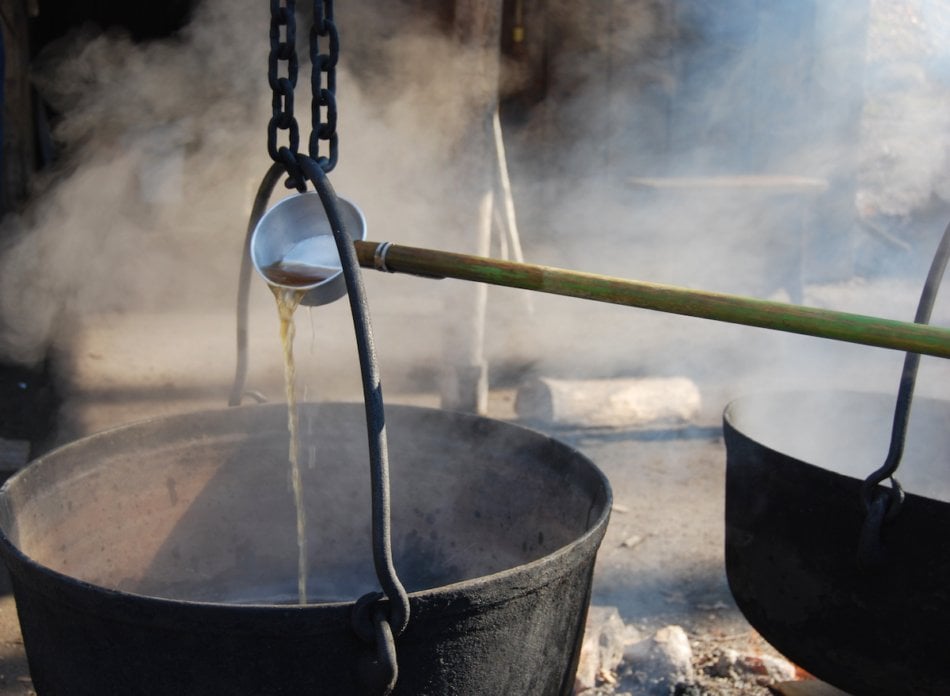
When you’ve gathered enough to start boiling, filter your sap through several layers of cheesecloth. Use a pan with a lot of surface area to boil the sap. The more surface area, the sooner you get syrup. If foaming occurs, skim it off and throw it out. The sides of your pan should be at least eight inches high to prevent boiling over. A small amount of butter rubbed on the rim of the pan will help to contain it. I’m boiling mine outside on an old woodstove. Doing it inside may result in a lot of sticky surfaces.
Although it is possible to make syrup without one — and I have — it’s a good idea to purchase a thermometer that will measure up to around 240° F. Find the boiling point of water for your elevation using your thermometer. As a rule of thumb: finished syrup boils at 7.1° F above the boiling point of water. If you go beyond the finish temperature, just add more sap and bring the syrup down to the correct point. When your ready to put up your finished product, pour the liquid into canning jars while still hot (at least 185° F) and seal tight. If you want to make your own maple candy, bring the finished syrup up to 237° F then cool down to 155° F and pour it into molds to harden.
Happy Sugarin’!
Paul Robert
Paul Robert lives in Hartford, Maine, with his dog Raymond. He has been an organic gardener for over 35 years, and raises some poultry as well. His special interest is trees. Several kinds of oak and elm, as well as Korean mountain ash, American and Chinese chestnut, persimmons and many other specimens grow on his 1.6 acre mini-farm. He may be contacted at [email protected].


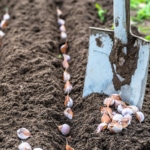
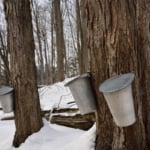
I am very interested to grow my own maple tree (i think the name is sugar maple tree), my question is can i grow it in The Netherlads?
looking forward to hear the answer.
thank you
sincerely
becky
I loved the article on making your own syrup. I would love to make my own, if we had maple trees in our yard. Thank you for sharing.
I grew up in Michigan and every year it was a big event when My Grandad collected the sap and Grandma made Maple Sugar Candy for all us kids..our neighbors continued until they both died about 2 years ago. I wonder how well the maple trees would do here in Central Nevada and how old does the tree have to be before you can sap them. Also, they do not grow here anywhere, they have to be planted, just wondering, I really, really miss the real maple syrup; pancakes are not the same (and I had to quit eating them) without it and it is WAYYYY too expensive in the stores. I live on WAYYY too little on SS, so wondering about growing my own trees. Thank you for this article, Penny